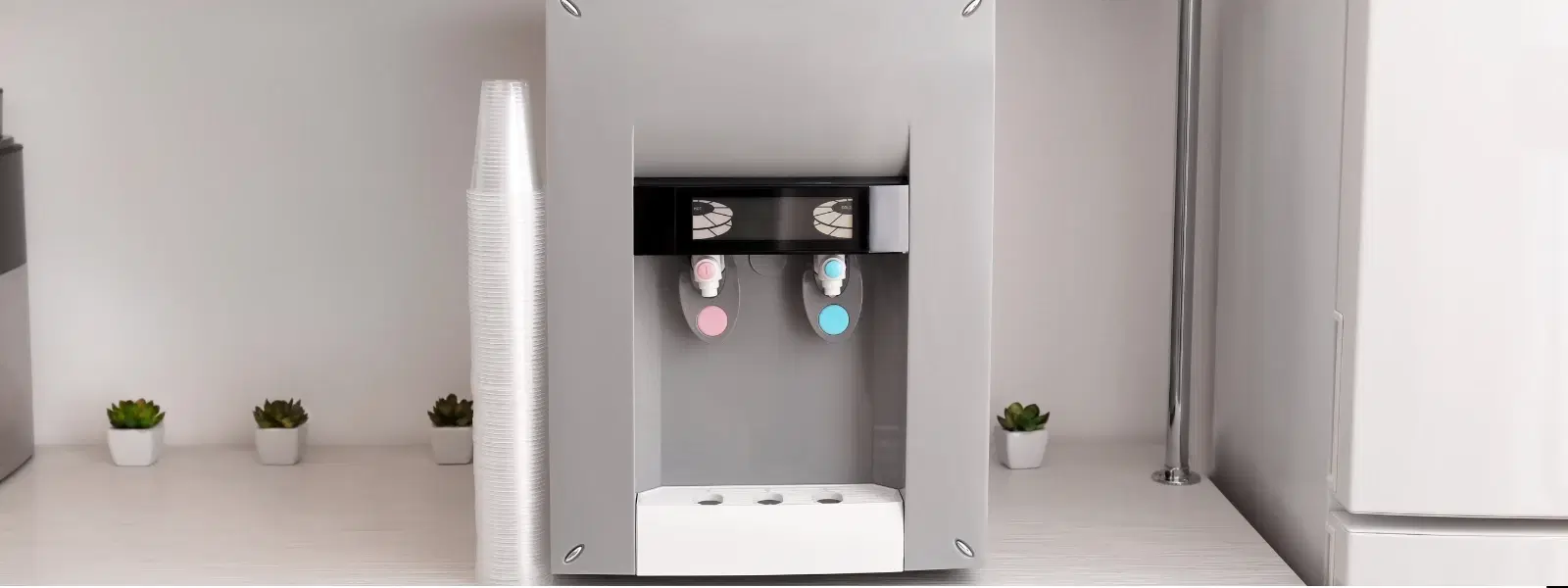
Home Appliances
•06 min read
A well-functioning reverse osmosis (RO) system is essential for ensuring clean, great-tasting drinking water. When your ro not working begins to cause frustration, it can disrupt your everyday routine. In this guide, we offer expert insights and step-by-step troubleshooting tips to help you diagnose and resolve common issues with your RO system. Our aim is to empower you with knowledge about reverse osmosis troubleshooting and to keep your water purifier performing at its best.
Before diving into the repair process, it is crucial to understand the common challenges encountered in an RO system. Whether it’s the unit not producing water or issues with water taste, several factors might be at play.
If you notice that your RO unit is not producing water, the problem might be due to an empty water tank, clogged filters, or even a faulty pump. It’s advisable to perform quick checks by ensuring the water supply is turned on, verifying tank levels, and inspecting each filter for blockages.
A slow flow rate can indicate problems like clogged pre-filters, low water pressure, or issues with the RO membrane. Check your pre-filters for any buildup and consider cleaning or replacing them as needed. This is a common scenario encountered in both RO water flow issues and overall system maintenance.
The unpleasant taste or smell in your drinking water is often caused by exhausted filters or bacterial contamination. Assess whether it might be time to replace the filters, and inspect the post-filter for any faults. Even minor issues may lead to RO filter problems and compromise water purity.
Once you have identified the possible issues, follow these comprehensive steps to bring your RO system back to optimum performance:
Regular filter maintenance is crucial in preventing common RO system issues. Begin by examining all filters – pre-filters, carbon filters, and post-filters. Remove and inspect each one to determine if they are blocked by sediments or have reached the end of their lifespan. For instance, activated carbon filters or carbon filters might accumulate impurities over time, while membrane issues might require attention to RO membrane failure.
The RO membrane is the core of your water purifier. Signs of its failure include a noticeable drop in water production and quality. Test the membrane by comparing the total dissolved solids (TDS) in your filtered water versus the feed water. If the disparity is minimal, replacement might be necessary as part of your RO system repair routine.
A faulty RO pump can also lead to problems such as the system not producing water. Listen for unusual sounds like a constant gurgle or vibrations. Check the pump’s performance, and if you suspect it is not working properly, follow the repair instructions or consider replacing it to resolve issues related to a RO pump not working scenario.
Ensuring proper water pressure is key to efficient RO operation. Low pressure or slow water flow might be resolved by checking supply lines and cleaning the pre-filters. This step helps alleviate the common complaint of an RO water purifier not working due to air blockages or outdated filter media. You can also consider evaluating other components such as filter cartridges and filter media like activated alumina and chloramine filters if they are part of your setup.
Did You Know? Regular maintenance not only extends the life of your RO system but also ensures that you consistently enjoy pure water. Integrating simple practices, such as routine filter checks and timely pump inspection, can greatly improve your water quality. Moreover, Tata Neu provides excellent support and an additional layer of protection with ZipCare services, ensuring your appliances are always at their best – and you earn NeuCoins while you shop smartly.
There could be several reasons – from an empty water tank and clogged filters to a malfunctioning pump. Begin by checking your supply line and filter conditions.
It is generally recommended to replace pre-filters every six months and carbon or post-filters yearly, though usage and water quality may affect these intervals.
Unpleasant taste often results from exhausted filters or bacterial buildup. Sanitize your system and replace any filters that are not performing effectively.
Ensure that your input water pressure is sufficient, clean or replace clogs in your pre-filters, and check for any blockages in the storage tank or tubing.
While regular DIY checks can address many issues, professional maintenance – such as Tata Neu’s ZipCare – can provide comprehensive service and additional peace of mind.
Modern RO systems share similarities with other advanced technologies, from video phone innovations enabling sharing and communication to the refined design seen in camera phones today. Much like these technological marvels, your water purification system requires periodic nurturing to perform optimally. Maintaining your RO system is akin to giving attention to fine details – like ensuring proper water filtration through ultrafiltration, microfiltration, or even nanofiltration methods – that ultimately elevate the quality of your everyday experience.
In summary, troubleshooting an RO system that is ro not working involves a systematic examination of filters, membranes, the pump, and overall water flow management. By following these guidelines, embracing regular maintenance, and utilising expert support services, you can ensure continuous access to safe, delicious drinking water. Explore Tata Neu’s range of home appliances and take advantage of ZipCare services for added protection. Remember, every proactive step you take not only secures better water quality but also brings you opportunities to earn NeuCoins – rewarding you for shopping smartly while making your life simpler.